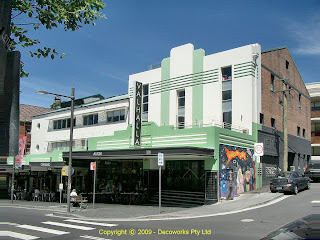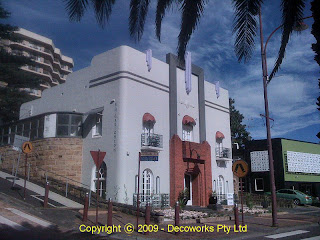The Empire Picture Theatre

The Empire Picture Theatre building at 303 Cleveland Street, Redfern, is historically significant as it illustrates the changing nature of leisure, entertainment and commerce in the inner city over the course of the 20th century. It was built as the Palace Skating Rink in 1890 and by 1895 was a Swimming Baths. In 1905 Petchell F and Co, boot manufacturers were in residence and in 1917 the Eclipse Printing Company called it home. It became the Empire Picture Theatre in 1930 and in 1933 was owned by George Harold Towart of Enfield, Showman. In 1961 it was known as 'The Stage Club Limited'. Facade detail Today nothing is left inside and the space has been completely gutted and converted into commercial office space. The Cleveland street facade has been modified (I would guess by George Towart?) into a stylised, post-modern interpretation of Art Deco motifs giving it a monumental character. It had apparently been "colourfully painted" however today it is qu...










